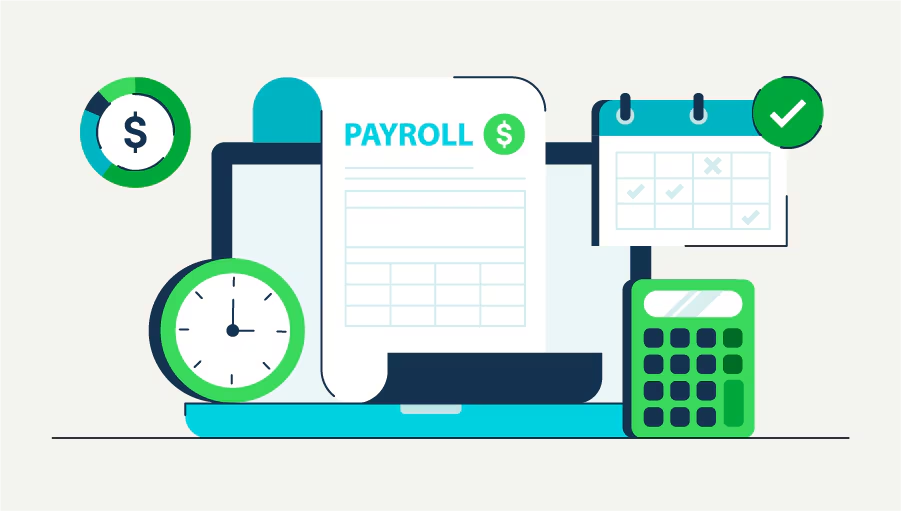Stablecoins are becoming the payment method of choice for more and more companies that handle worldwide payroll. Stablecoins are tied to real-world currencies like the US dollar or the euro, so their value doesn't shift like it does with cryptocurrencies like Bitcoin or Ethereum. Because of this, they are quite helpful for payroll, where everything needs to be stable and predictable. As more people work from home, digital-first firms, and teams are spread out over the world, stablecoin payroll is filling in the gaps in global finance and making payment systems faster, cheaper, and more dependable.
What is the Stablecoin Payroll
When you pay employees, independent contractors, and freelancers with stablecoins like USDC (USD Coin) or USDT (Tether), that's called stablecoin payroll. Blockchain technology makes these digital currencies feasible and ensures that transactions are safe, clear, and paid straight away. Businesses can save time and money by not employing traditional financial middlemen, which speeds up cross-border payroll crypto solutions.
This technique is quite helpful right now, when there are a lot of remote workers in many different nations. Employers can pay their workers via blockchain networks that are open 24 hours a day. This way, they don't have to deal with a lot of banks, currencies, and exchange fees.
Why Businesses Are Using Stablecoin Payroll
More and more organisations are using crypto payroll solutions since they are learning how much better they are than traditional payroll systems. Here are some of the best benefits:
Payments that are quicker and don't have to wait:
Even across borders, transfers of stablecoins settle in just a few minutes. They don't stop on weekends or holidays like bank transfers do. This implies that freelancers can collect their money immediately instead of having to wait days for clearance.
Transactions that cost less:
FX markups and wire transfer costs make traditional payroll systems pricey. Businesses estimate they can save 3–5% on payroll expenditures and, in some situations, up to 95% on payments made to personnel in other countries. A stablecoin salary transfer might just cost $3, but a bank wire could cost $35 to $45 plus a fee for changing the currency.
Safety and Transparency:
You can check stablecoin transactions because they are all recorded on open blockchains, and they can't be modified. Employees are more sure that payments are authentic, and companies are less likely to encounter difficulties or fraud. A survey of organisations that employed blockchain payroll revealed that 62% of them indicated there were fewer disagreements in general.
Protection from currency that isn't stable:
Your pay will maintain the same value if you get paid in USDC or USDT, even in countries where inflation or devaluation is rampant. Because of this, it is better for workers in developing nations to be paid in stablecoins than in regular bank transfers.
Access Without Limits:
Stablecoins make it easier for folks who can't use regular banks to send money. This feature makes it easier for businesses to work across borders because they can pay independent freelancers in more than 190 countries with stablecoins.
Also Read: Stablecoins vs Bitcoin vs Ethereum for Payments: Which Works Best?
How Stablecoins are being used for Payroll
Data demonstrates that stablecoins are being used more and more around the world to pay salaries:
- Only 15% of multinational corporations paid some of their workers in cryptocurrencies in 2023. That figure had climbed to 25% by 2025.
- By the end of 2024, approximately 10% of individuals used it, up from 3% in 2023.
- Stablecoins are the most popular sort of digital pay cheque, and they make up more than 90% of all cryptocurrency salaries.
With a 63% market share, USDC is in first place. USDT is in second place with 28.6%. They make up more than 91% of all payroll transactions in cryptocurrency. Other cryptocurrencies, like Ethereum or Solana, make up less than 5% of the total.
There is also a change in the generation. According to research, 75% of Gen Z workers would rather obtain at least a portion of their income in stablecoins. Web3 professionals currently make more than $103,000 a year on average. Companies that are ahead of the curve are embracing blockchain payroll systems to hire and keep the best staff.
These data are backed up by case studies. Deel, a worldwide HR platform, pays contractors in more than 100 countries using BVNK. Through its relationship with Circle, Rise, another payroll solution provider, has processed more than $800 million in payroll volume across more than 20 blockchains. That amount included 60% USDC.
Problems and Risks in Stablecoin Payroll
There are several flaws with the system, even if it has a lot of promise. Companies that want to use cryptocurrency payroll systems for teams that work in more than one nation need to think about these factors first:
- Regulatory Complexity: Stablecoins are treated differently in different nations. Some governments think of them as investments, while others think of them as money. Cross-border laws, tax reporting, and following the rules for AML and KYC make things harder.
- Stability Risks: Not all stablecoins are the same. The failure of algorithmic stablecoins like TerraUSD (UST) highlights how crucial it is to pick fiat-backed choices like USDC or USDT that have clear reserves.
- Barriers to Technology: Companies that don't know how to use technology may have problems with digital wallets, private keys, and connecting blockchain to their accounting systems. You could lose all your money if you can't get inside your wallet.
Also Read: Will Stablecoins Replace Bank Wires? An Outlook for the Next 5 Years
How to Use Stablecoin Payroll in Business
If you wish to utilise stablecoins to pay freelancers, you should follow these best practices to make sure that adoption happens:
- Set Up Secure Wallets: Workers require safe wallets like MetaMask, Trust Wallet, or custodial services from exchanges.
- Choose the Right Stablecoin: Put USDC or USDT, which are clear and popular, at the top of your list.
- Let staff swap stablecoins for local currencies on Binance or Coinbase to make conversions easier.
- Begin with pilot programs: Before rolling out to the complete organisation, try it out with a small group of workers.
- Show your workers how to utilise digital wallets, submit their taxes, and keep their private keys safe.
- Use solutions that follow international regulations and operate nicely with your accounting and HR systems to be sure you're following the requirements.
A lot of businesses use specific platforms like TransFi to make this procedure easier. TransFi makes it easier for businesses to start and administer international payroll by letting remote workers get paid in stablecoins right away, in a method that is compliant and can grow. Businesses can get in touch with TransFi's specialists to chat about how to make their teams work better.
The Future of Cross-Border Payroll
The increase in stablecoin payroll is a sign that the way people are paid around the world is changing a lot. As businesses grow all around the world, the need for payroll solutions that are efficient, safe, and economical will only grow. Stablecoins solve the problems with regular banks because they can be used anywhere, have a defined value, and are always available.
In the future, stablecoins are likely to play a large role in the global payroll system as rules get better and blockchain solutions become easier to use. To stay competitive, businesses will need to embrace crypto payroll solutions.
Conclusion
Stablecoins are revolutionising how payroll works since they are faster, more open, and less expensive than the old ways. Stablecoins are changing the way people pay each other across borders by making it cheaper, safeguarding workers from changes in exchange rates, and making it simpler to reach people all over the world. Companies that utilise stablecoin for payroll now will be able to hire workers from all over the world more easily, make their operations run more smoothly, and keep their payment systems safe in the future. Platforms like TransFi help bring about this transformation by allowing for quick settlement while still following the rules. This gives companies the confidence they need to expand their enterprises around the world.
FAQs:
1. What is the payroll for stablecoins?
You can use stablecoins like USDC or USDT to pay employees, independent contractors, or freelancers. These coins are tied to fiat currencies to keep their value stable.
2. How do you pay freelancers with stablecoins?
Employers transfer stablecoins straight to a freelancer's virtual wallet. The freelancer can either keep the bitcoin or swap it for cash in their area.
3. What are the pros of firms using stablecoin payroll?
Some of the key benefits are shorter settlement periods, lower fees, more openness, protection against local currency devaluation, and access to talent from around the world.
4. Is it lawful and taxed to pay salaries with stablecoins?
Yes, it is. Stablecoin salaries are considered regular income in most places, so you have to report them for tax purposes. People are treated differently in different countries.
5. What is the best stablecoin for companies to use to pay their workers?
Most businesses like USDT because it's easy to trade and generally accepted, or USDC, since it's clear and can be checked. The law, the location of the business, and what it needs all play a role in the selection.
Table of Contents
Suggested Article
Explore our products

Make global payments at the speed of a click

Accept payments, remove borders.

Unlock Seamless Digital Currency Transactions Anywhere








.png)














